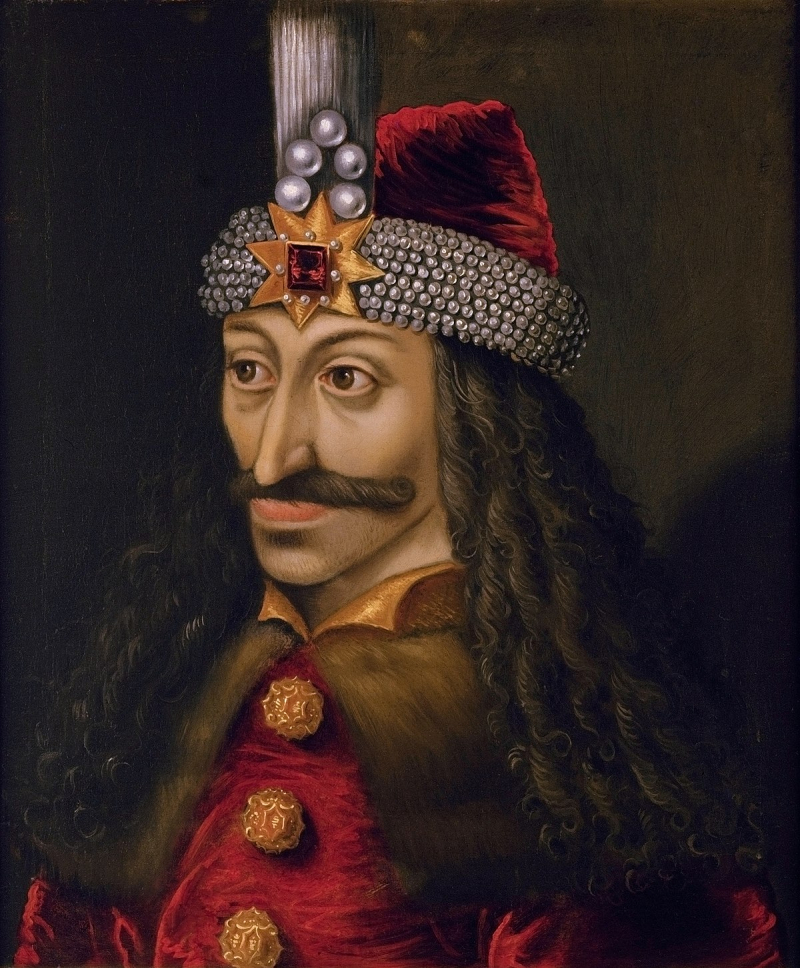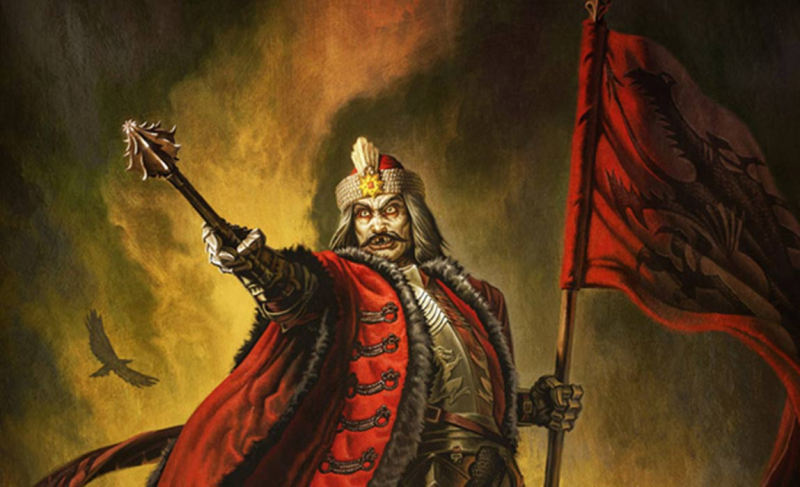Vlad the Impaler
Vlad III, also known as Vlad the Impaler or Vlad Dracula (1431 - 1476), was Voivode of Wallachia three times between 1448 and 1476. He is widely regarded as one of the most important rulers in Wallachian history and a Romanian national hero.
He was Vlad Dracul's second son, who became ruler of Wallachia in 1436. In 1442, Vlad and his younger brother, Radu, were taken as hostages in the Ottoman Empire to ensure their father's loyalty. After John Hunyadi, regent-governor of Hungary, invaded Wallachia in 1447, Vlad's eldest brother Mircea and their father were murdered. Hunyadi appointed Vladislav II, Vlad's second cousin, as the new voivode. In the autumn of 1448, Hunyadi launched a military campaign against the Ottomans, and Vladislav accompanied him. In October, Vlad invaded Wallachia with Ottoman support, but Vladislav returned, and Vlad sought refuge in the Ottoman Empire before the end of the year. In 1449 or 1450, Vlad went to Moldavia, and later to Hungary.
Later, relations between Hungary and Vladislav deteriorated, and Vlad invaded Wallachia with Hungarian support in 1456. Fighting against him, Vladislav died. To strengthen his position, Vlad began a purge among the Wallachian boyars. He clashed with the Transylvanian Saxons, who backed his opponents, Dan and Basarab Laiotă (Vlad's brothers) and Vlad's illegitimate half-brother, Vlad Călugărul. Vlad pillaged the Saxon villages, transporting the captured people to Wallachia and impaling them (which inspired his cognomen). In 1460, peace was restored.
The Ottoman Sultan, Mehmed II, ordered Vlad to personally pay homage to him, but Vlad captured and impaled the Sultan's two envoys. He launched an attack on Ottoman territory in February 1462, slaughtering tens of thousands of Turks and Bulgarians. Mehmed launched an anti-Wallachia campaign to replace Vlad with Vlad's younger brother, Radu. During the night of June 16-17, 1462, Vlad attempted to capture the Sultan of Târgoviște. The Sultan and the main Ottoman army fled Wallachia, but an increasing number of Wallachians deserted to Radu. In late 1462, Vlad went to Transylvania to seek assistance from Matthias Corvinus, King of Hungary, but Corvinus imprisoned him.
From 1463 to 1475, Vlad was imprisoned in Visegrád. During this time, anecdotes about his cruelty began to circulate in Germany and Italy. In the summer of 1475, he was released at the request of Stephen III of Moldavia. In early 1476, he served in Corvinus' army against the Ottomans in Bosnia. In November, he was assisted by Hungarian and Moldavian troops in forcing Basarab Laiotă (who had dethroned Vlad's brother, Radu) to flee Wallachia. Before the end of the year, Basarab returned with Ottoman support. Before January 10, 1477, Vlad was killed in battle. Books describing Vlad's atrocities were among the first to go on sale in German-speaking countries. Popular stories in Russia suggested that Vlad could only strengthen his central government by imposing harsh punishments, and most Romanian historians held a similar view in the nineteenth century. Bram Stoker's literary vampire, Count Dracula, was named after Vlad's patronymic.










